Blueglauca spruce, description, plant characteristics, pruning, care rules
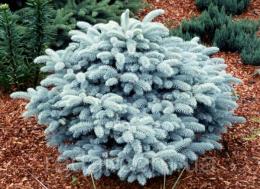
Blue spruce glauka globosa is a dwarf variety of prickly spruce imported from North America. It was bred through selective breeding at the beginning of the last century.
This kind coniferous plants are widely used in landscape design due to their unpretentiousness, beautiful color and unusual shape.
Content:
- Description of spruce Glauca globosa
- Landing Features
- Plant care rules
- Pruning spruce Glauca globosa
- Diseases and pests
Description of spruce Glauca globosa
This plant is bluish in color. At an early age it has a round shape due to the absence of a pronounced trunk. After 10 years, the trunk begins to form, and spruce takes the form of a spreading cone.
Prickly spruce glauka globosa grows slowly. After 30 years, its height does not exceed 2 m. The annual growth of spruce is about 8 cm. The total lifespan is up to 500 years.
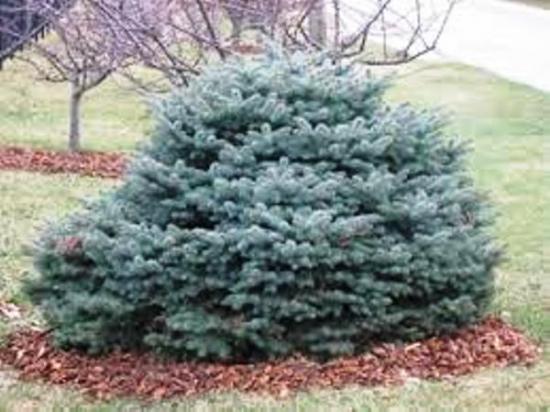
The plant has strong and rigid branches that grow to the sides or upwards at a slight angle. The needles are sharp, sickle-shaped. The cones are oblong, brown in color, grow and fall off in the first year of the plant’s life.
Spruce Glauca globoza is unpretentious. It tolerates drought and frost well. Thanks to its resistance to smoke, gas and soot, it easily takes root in urban areas.
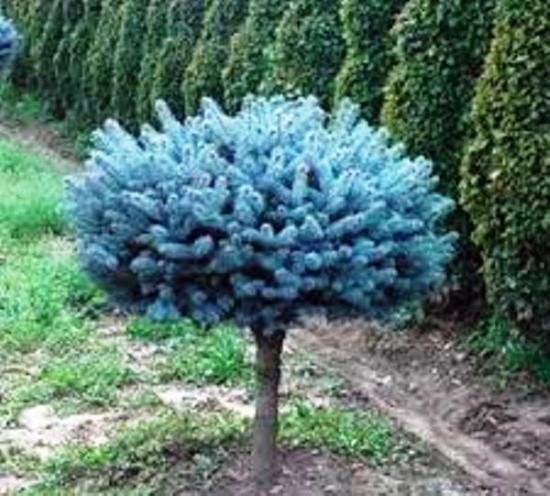
The spruce prickly glauka globoza on a trunk looks original. This is a spruce grafted onto a tree with a long trunk. It turns out to be a coniferous ball on a high stem.
Landing Features
Spruce is planted from mid-spring to mid-summer. Before planting this coniferous plant, you need to choose the right site. It should be located away from groundwater. Preferably loose, moderately moist the soil.
This variety of blue spruce is photophilous. Therefore, they choose the sunny side for planting it. In such a place, the land will be without excess water.
A hole for planting Glauca globoza is dug about a meter deep. It is better to take the soil from a coniferous forest and mix it with sand and peat in a ratio of 2:1:1. If the area is still susceptible to flooding, you need to add a drainage layer of sand or crushed stone 20 cm thick.
The root collar of the plant should be at ground level. After planting, the spruce must be watered abundantly (about 50 liters of water). Add fertilizer if desired.
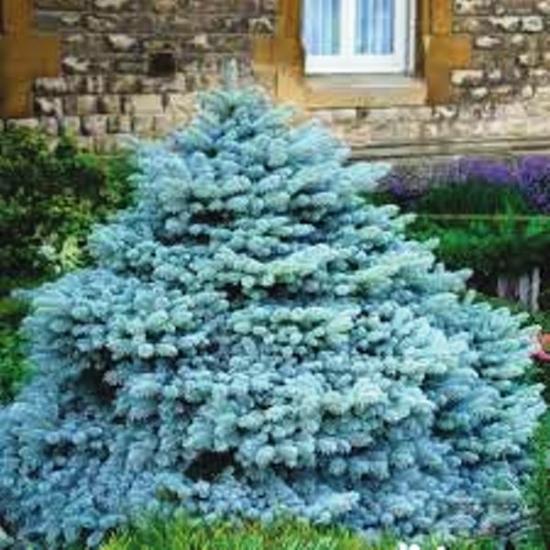
If Christmas trees planted in groups, the distance between trees should be about 2 m.
Plant care rules
Care for glauka spruce is only necessary in the first couple of years of life. An adult tree is unpretentious and grows without causing any trouble.
In order for the plant to take root well, it is important to follow the following rules.
- Feeding Spruce fertilizers should be applied once a year.
- In hot weather, water the tree weekly. There should not be too much water to avoid rotting of the roots.
- In the first week after planting, water the Christmas tree with a solution that stimulates root growth.
- The soil around the trunk must be regularly loosened 5 cm deep.
- In spring and summer, protect the tree from direct sunlight.
- In the hot season, wash the foliage from dust.
- Sprinkle the soil near the trunk for the winter peat.
- In the first 2 years, cover the tree for the winter. Then clean it of snow to avoid ice.
- After winter, pour warm water over the ice lump near the trunk so that the ice melts faster.
Pruning spruce Glauca globosa
Spruce pruning is divided into two types:
- decorative (to give shape and change the direction of growth of branches);
- sanitary (removal of diseased and dried branches).
Glauca globoza holds its shape well and practically does not need decorative pruning. It can be carried out if the tree forms a living fence or its branches interfere with the growth of other plants.
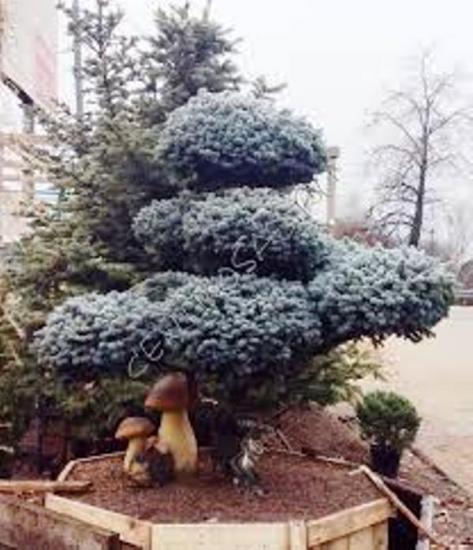
Decorative pruning is held in the spring. It is not recommended to do it in winter due to the fact that the cuts react poorly to the cold. In summer, pruning is not advisable due to the risk of disease.
It is best to give the crown the desired shape immediately after transplantation. If everything is done correctly, a repeat procedure may not be necessary. If you want the tree to have an unusual crown, trimming should be done while the tree is young, up to 8 years old. After this period, the crown is no longer touched.
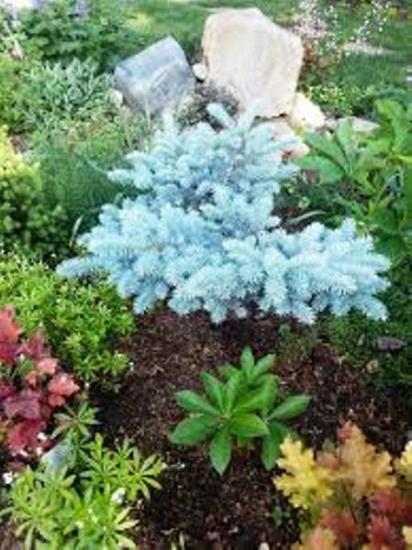
Sanitary pruning can be carried out at any time of the year and at any age as needed.
In order not to harm the tree, you must follow the pruning rules:
- Clean, sharp instruments must be used.
- The cut should be slightly above the new buds.
- The top is cut off by 2-3 cm. In its place, 2 new branches are then formed, one of which must then be removed.
- No more than a third of last year's growth should be pruned, otherwise the plant will weaken.
Diseases and pests
With proper planting and care, the prickly spruce globosa is practically not susceptible to diseases.
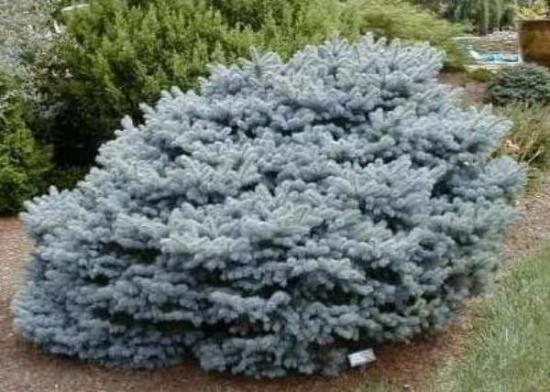
But sometimes pests can settle on a tree. Here are some of them.
Aphid
This insect causes the needles to turn yellow and become covered with a white sticky coating.To get rid of the pest, you need to treat the affected areas with insecticides, dust, and soap solution with the addition of ash.
Bark beetle
The beetle makes passages in the wood and infects it with fungus. The trunk is covered with wood dust. To get rid of the bark beetle, you need to remove completely dead areas of the tree, then poke holes with steel wire to drive the pest away. After this, it is necessary to treat the plant with insecticides.
Spider mite
It can be recognized by the thin web on the branches and trunk. It feeds on the sap of the spruce tree, destroying its cells. This causes the plant to dry out and die. You can get rid of the parasite using acaricides.
Shchitovka
Promotes leaf fall, drying out and death of the plant. Insects are removed mechanically using a toothbrush or cloth soaked in an alcohol-soap solution or a mixture of kerosene and soap. You can use commercial chemicals.
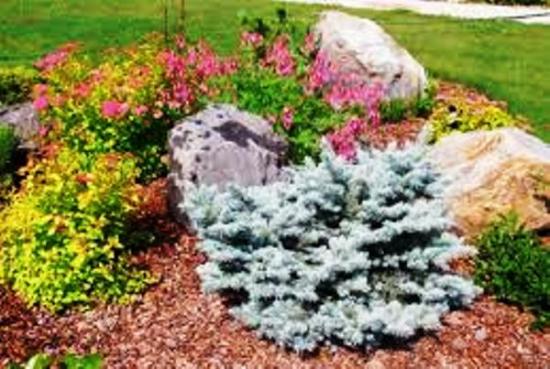
Prickly spruce glauka globoza is a beautiful and unpretentious plant that will look impressive in any area. Good in single and group plantings, in the form of a hedge.
Useful tips for those who decide to choose a spruce seedling and plant it on their site:


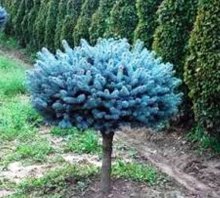
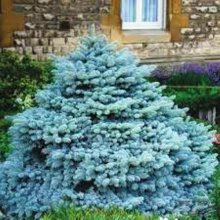
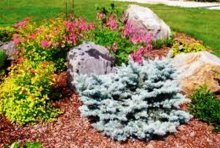
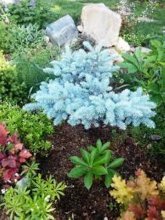
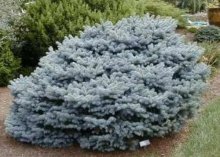
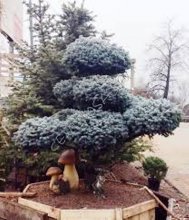
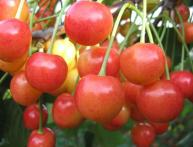

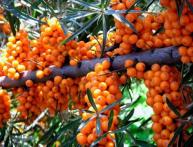

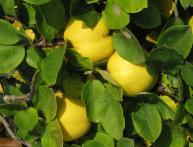
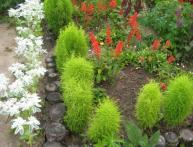
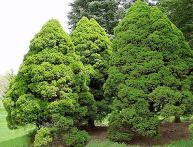
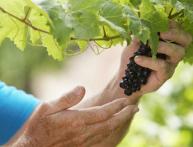
Comments
We bought the blue spruce glauka globoza for landscape design and for the price it is a very expensive pleasure. If we also take into account the fact that out of three trees only one has taken root, and it is not yet known whether it will survive the winter, then the purchase is risky.
Such a beauty has found its place in my front garden, where the lighting and humidity are just right for it. It tolerates winters well, obviously the climate of our strip suits it perfectly. It does not require any special care.